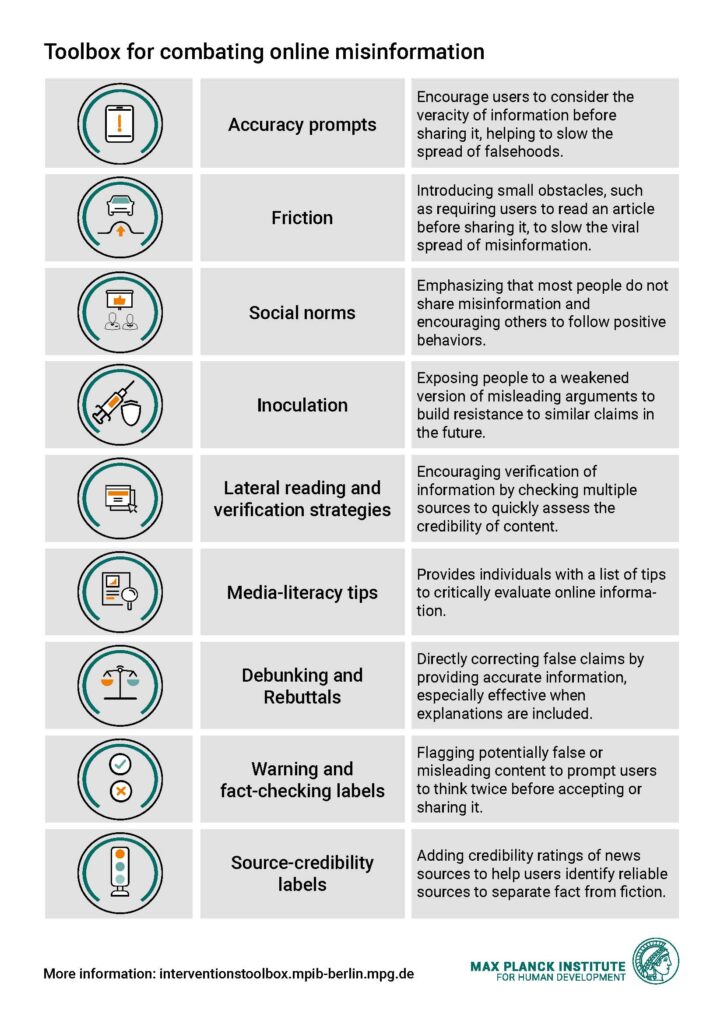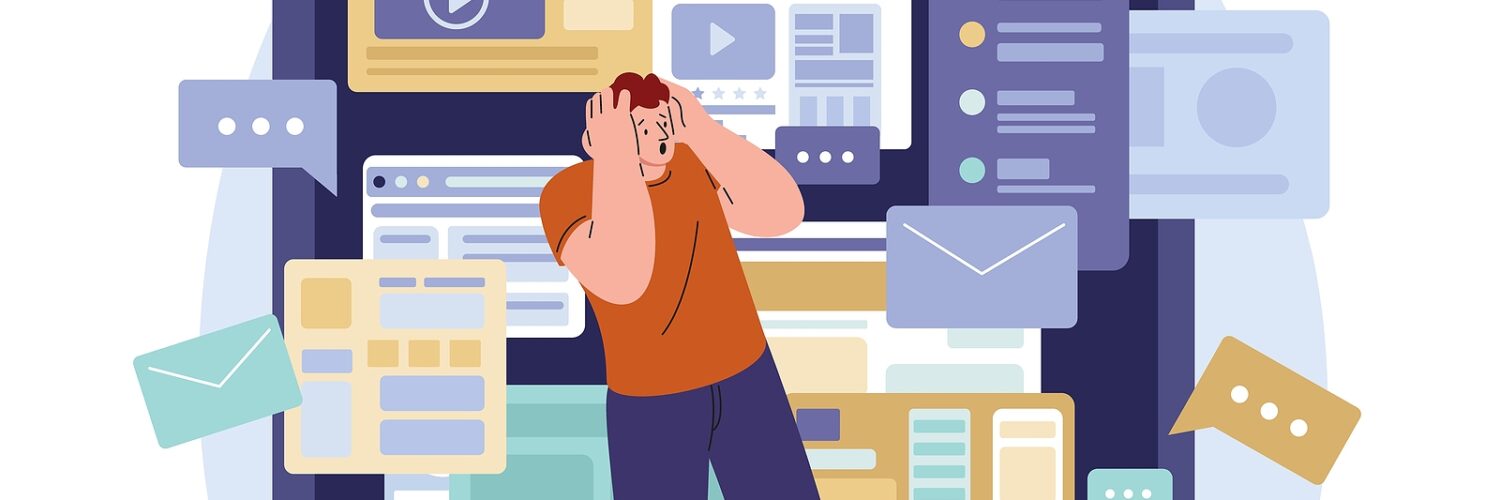by Nicole Siller, Max Planck Institute, Germany.
How can we protect ourselves from online misinformation? Our toolbox offers nine evidence-based strategies—ranging from warning and fact-checking labels to media literacy techniques—to help users identify and counter false information. Developed through a collaborative effort by researchers from 25 institutions and universities, this open-access resource is crafted for a broad audience. It serves not only everyday citizens but also policymakers and educators, who play a key role in promoting media literacy in their schools and institutions.
In today’s digital age, misinformation spreads rapidly, often with harmful consequences for society. The rise of false and misleading information online can threaten public health, undermine trust in democratic institutions, and increase social discord. As these challenges mount, researchers and policymakers increasingly focus on finding effective ways to counteract misinformation. One innovative response is the development of a toolbox of individual-level interventions against online misinformation. It includes empirically validated tools designed to equip individuals with the skills and tools necessary to identify, resist, and refute misinformation.
Based on findings from 81 scientific papers, this resource provides a detailed overview of different types of interventions, their effectiveness, and the contexts in which they have been tested. These are accuracy prompts, debunking and rebuttals, friction, inoculation, lateral reading and verification strategies, media-literacy tips, social norms, source-credibility labels, and warning and fact-checking labels. Each intervention serves a unique purpose in helping us to navigate the complex digital landscape. While some interventions, such as media literacy tips or lateral reading and verification strategies, empower individuals by enhancing their competencies, others, like debunking, accuracy prompts, and fact-checking labels, require the involvement of experts, policymakers, or platforms for implementation. “We are dealing with a multifaceted problem that cannot be tackled with a single intervention. We have to address it on multiple fronts,” says Anastasia Kozyreva, Senior Research Scientist at the Center for Adaptive Rationality at the Max Planck Institute for Human Development. Kozyreva, whose research focuses on developing tools for the digital age played a key role in creating the toolbox. “The strength of the toolbox lies in its ability to offer a thorough review of existing interventions, providing a broad range of solutions.”
Why do we need it?
Misinformation is a fierce adversary. Online platforms use various methods like content moderation and algorithmic downranking to combat it, but these measures aren’t enough. They also raise free speech concerns. The toolbox offers an alternative: it empowers users to make informed decisions, striking a balance between combating falsehoods and preserving free speech.

What makes the toolbox special?
The toolbox is not just a simple collection of methods; it is the result of intensive collaboration between the Max Planck Institute for Human Development and many leading researchers in the field from 24 institutions and universities. This collaboration has made it possible to develop a comprehensive and diverse set of interventions that are scientifically based and tested in a variety of contexts. What makes this toolbox unique is its breadth and depth: it offers not only theoretical approaches, but also practical tools that can be directly applied by users. This collaborative effort reflects the commitment of the scientific community to finding solutions to the urgent problem of online misinformation.
Who can benefit from the toolbox?
The toolbox is designed for a wide audience, including everyday internet users, educators, policymakers, and researchers. For the average user, it offers practical strategies for identifying and countering misinformation in everyday interactions. Educators can use it to enrich media literacy programs with simple tools, while policymakers can use it to shape regulations against misinformation. Researchers will find it valuable for studying the effectiveness of interventions and developing new strategies to combat evolving online misinformation.
Why do we need more research?
While the toolbox is a solid starting point, it’s not the final word on how to combat online misinformation. We still need to study how these interventions work across different demographics and cultures. And as new forms of misinformation, like AI-generated deepfakes, emerge, we’ll need new strategies to keep up. Ongoing research is critical to refining these tools and developing new ones that can address the evolving challenges of misinformation.
Importantly, the toolbox focuses on individual behavior but does not address larger, systemic issues, such as distorting social media algorithms or the economic incentives that drive sensational content. System-level approaches – such as algorithm reform, stronger content moderation, and economic disincentives for misinformation – are also essential to effectively and sustainably combat online misinformation. This can only be achieved through cooperation between platform operators and policy makers.
The toolbox has been published in the journal Nature Human Behaviour. You can access the article with free, read-only access here: https://rdcu.be/dH6AE. It is also available to the public at https://interventionstoolbox.mpib-berlin.mpg.de/. The online supplement also contains selected examples of interventions.














